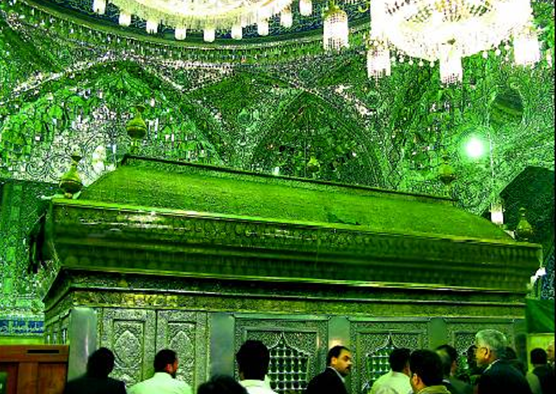Bohras, Dawoodi: and Kufa
This is a collection of articles archived for the excellence of their content. Readers will be able to edit existing articles and post new articles directly |
Bohras, Dawoodi: and Kufa
War-ravaged Kufa got back its glory thanks to Bohras
Mumbai Community Quietly Worked Wonders On Shia Holy Spot Kartikeya | TNN
Kufa (Iraq): A sprinkling of Dawoodi Bohras, with their white and gold pillbox skullcaps, stand out among thousands of pilgrims paying obeisance at one of the holiest Islamic shrines — the Great Mosque at Kufa in Iraq. But hardly anybody among the faithful knows that the small trading community from Mumbai has singlehandedly rebuilt the site at the peak of strife in the beleaguered Arab country.
Residents say the shrine was a run-down and a neglected structure thanks to the then Iraqi ruler Saddam Hussein’s apathy before Bohras started rebuilding the mosque in 1998. The mosque marks the place where Imam Ali, whom Shiites consider the successor to the Prophet Muhammad, was killed in 661. On the banks of river Euphrates, Kufa, around 170km from Baghdad, is of the five Iraqi cities of great importance to Shiites.
‘‘They (Bohras) did their job very quietly,’’ said Harvard University historian Tamara Chalabi. She said the mosque stands today entirely due to their work. ‘‘They even brought the architects and designers for the job,’’ said Tamara, who’s also Iraqi leader Ahmed Chalabi’s daughter.
Bohras, a denomination of Ismaili Shiites of Gujarati descent, have had historical ties running for centuries with Najaf and Karbala, the two of the holiest Muslim shrines. The Prophet’s grandson, Imam Hussain, was killed in the epic battle of Karbala in 680.
The mosque’s giant courtyard is entirely made of gleaming white marble carted from Makrana in Rajasthan, while its golden domes and intricate blue carvings testify the centuriesold shrine’s recent makeover. The mosque was refurbished in 2009 and has since attracted thousands of pilgrims from across the world. The sanctum, where Imam Ali prayed is brightly lit with huge chandeliers and covered with ornate carpets.
When Bohras floated the idea of rebuilding the mosque, Saddam was still in power and the 11-year project only got difficult after the 2003 American invasion. ‘‘People don’t understand how difficult it was to work during Saddam’s regime,’’ Tamara said. The Bohras got around the politics by maintaining an extremely low profile and worked mostly through the local government in Najaf and avoided getting into controversies or trouble with officials in Baghdad.
Tamara said one of the grandest mosques in the Arab world, which holds a special place in the heart of every Shiite, wouldn’t have been possible without the material and manpower support from India.
The most trying times for the project came after the second US invasion, which was followed by the worst sectarian strife in the country that left hundreds dead. The highway to Najaf often witnessed brutal bloodletting in which dozens of pilgrims were killed in suicide and roadside bombing.
The highway was the scene of the most recent attack on March 6, 2010. But even amidst all this, the Bohra volunteers continued to work. The signs of the strife are visible along the highway. The road is lined with burnt cars and buses and Iraqi army soldiers carrying automatic rifles patrol ever corner along the highway.
